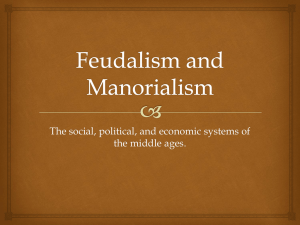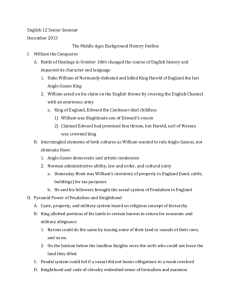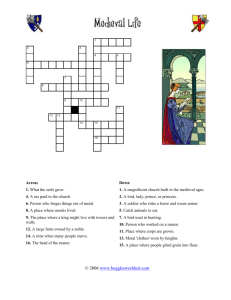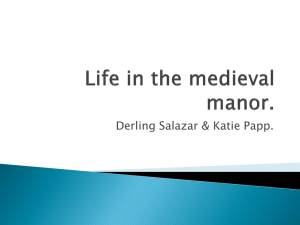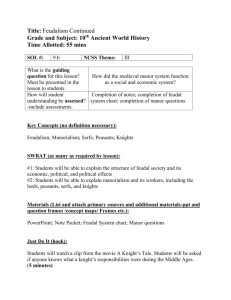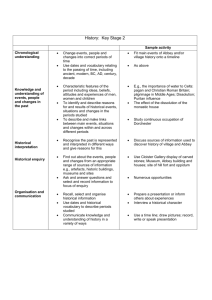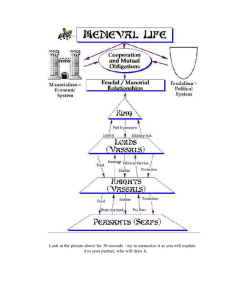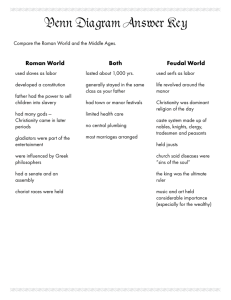Feudalism & Manorialism: Document
advertisement
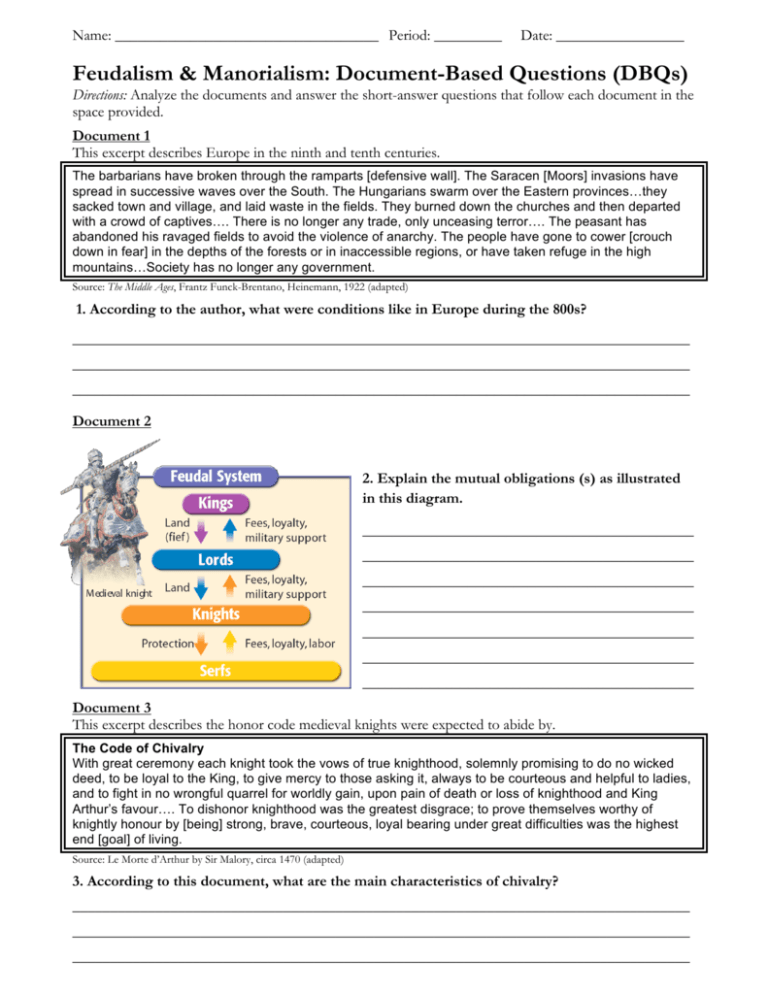
Name: ___________________________________ Period: _________ Date: _________________ Feudalism & Manorialism: Document-Based Questions (DBQs) Directions: Analyze the documents and answer the short-answer questions that follow each document in the space provided. Document 1 This excerpt describes Europe in the ninth and tenth centuries. The barbarians have broken through the ramparts [defensive wall]. The Saracen [Moors] invasions have spread in successive waves over the South. The Hungarians swarm over the Eastern provinces…they sacked town and village, and laid waste in the fields. They burned down the churches and then departed with a crowd of captives…. There is no longer any trade, only unceasing terror…. The peasant has abandoned his ravaged fields to avoid the violence of anarchy. The people have gone to cower [crouch down in fear] in the depths of the forests or in inaccessible regions, or have taken refuge in the high mountains…Society has no longer any government. Source: The Middle Ages, Frantz Funck-Brentano, Heinemann, 1922 (adapted) 1. According to the author, what were conditions like in Europe during the 800s? __________________________________________________________________________________ __________________________________________________________________________________ __________________________________________________________________________________ Document 2 2. Explain the mutual obligations (s) as illustrated in this diagram. ____________________________________________ ____________________________________________ ____________________________________________ ____________________________________________ ____________________________________________ ____________________________________________ ____________________________________________ Document 3 This excerpt describes the honor code medieval knights were expected to abide by. The Code of Chivalry With great ceremony each knight took the vows of true knighthood, solemnly promising to do no wicked deed, to be loyal to the King, to give mercy to those asking it, always to be courteous and helpful to ladies, and to fight in no wrongful quarrel for worldly gain, upon pain of death or loss of knighthood and King Arthur’s favour…. To dishonor knighthood was the greatest disgrace; to prove themselves worthy of knightly honour by [being] strong, brave, courteous, loyal bearing under great difficulties was the highest end [goal] of living. Source: Le Morte d’Arthur by Sir Malory, circa 1470 (adapted) 3. According to this document, what are the main characteristics of chivalry? __________________________________________________________________________________ __________________________________________________________________________________ __________________________________________________________________________________ Document 4 4. Based on this diagram, state one economic characteristic of the medieval manor. _____________________ _____________________ _____________________ _____________________ _____________________ _____________________ _____________________ _____________________ Source: Kime and Stich, Global History and Geography, STAReview, N & N Publishing Company Document 5 Tenants on a manor owed services to their lord. Some of these services are listed below. . . . To carry manure for two days, with a cart and two oxen, receiving food as before [3 meals each day]; To find a man to mow for two days receiving food as above; it is estimated that he can mow 1 1/2 acres in the two days; To gather and lift the hay so mown, receiving 2 meals for one man; To carry the lord’s hay for one day with a cart and three of the tenant’s own beasts, receiving 3 meals as before; To carry beans or oats for two days in the autumn, and wood for two days in the summer, in the same manner and with the same food as before; . . . Source: S. R. Scargill-Bird, ed., Custumals of Battle Abbey in the Reigns of Edward I and Edward II (1283–1312), The Camden Society (adapted) 5a. Based on the Custumals of Battle Abbey, state one benefit the lord received under manorialism. __________________________________________________________________________________ __________________________________________________________________________________ 5b. Based on the Custumals of Battle Abbey, state one benefit that tenants received under manorialism. __________________________________________________________________________________ __________________________________________________________________________________ Document 6 . . . Of necessity, the manor was a self-sufficient economic unit in view of the overwhelming difficulties of transportation in the period. International trade was carried on only to serve the demands of the wealthy, and it was largely in the hands of aliens [different peoples]—Greeks, Jews, Moslems. Local society made almost no use of money. To the extent that local exchange was carried on, it was conducted by barter. The small amount of international trade precluded [ruled out] the need for gold coinage. The Carolingians minted only silver coins, which were all that was usually necessary when the smallest silver coin could buy a cow. When gold coins were needed, Byzantine and Moslem currency was used. . . . Source: Norman F. Cantor, The Civilization of the Middle Ages, Harper Perennial 6. According to Norman Cantor, what are two ways manorialism influenced the economy of Europe? (1)________________________________________________________________________________ (2)________________________________________________________________________________

